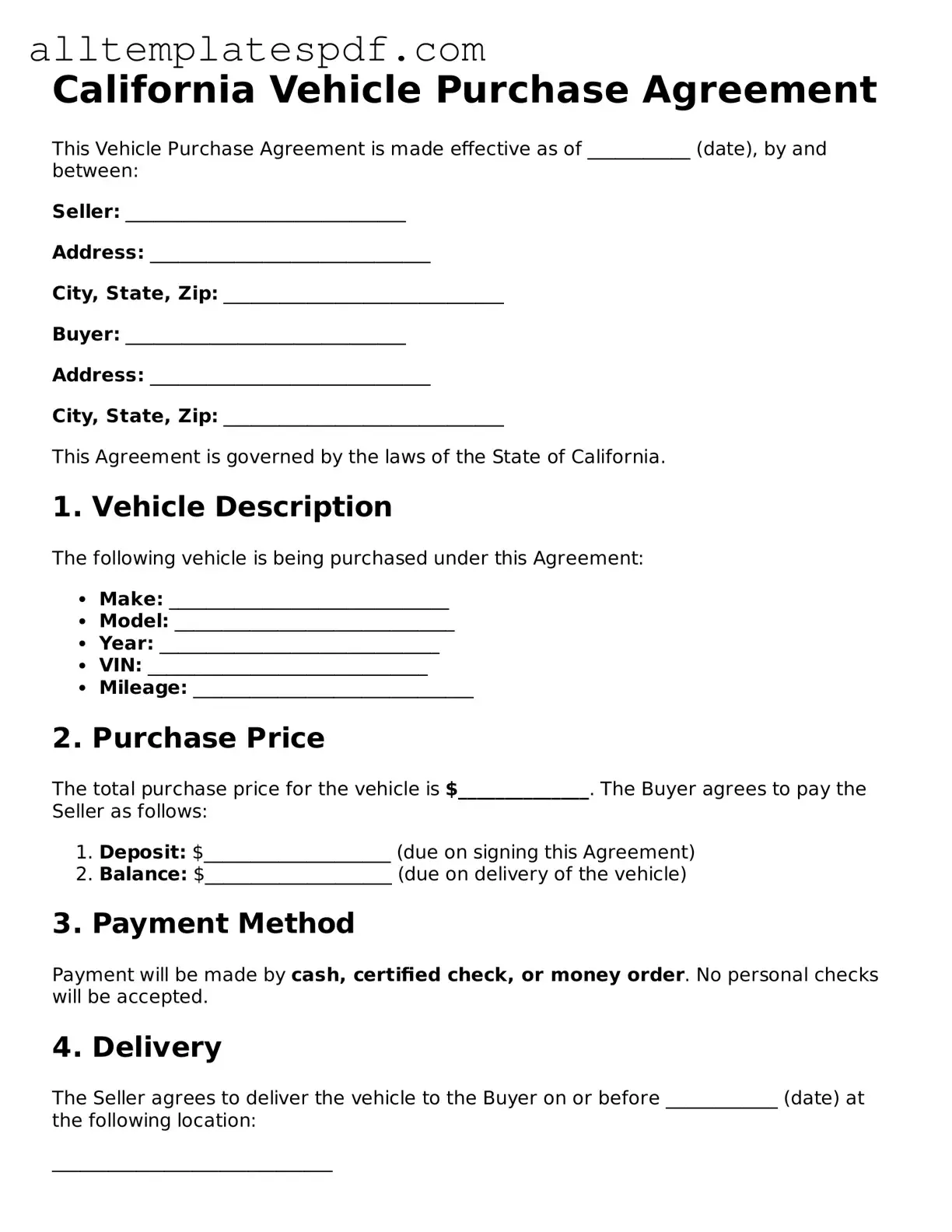Filling out the California Vehicle Purchase Agreement form is a critical step in completing a vehicle transaction. However, many individuals make mistakes that can lead to complications down the line. One common error is failing to include all necessary parties' names. If the buyer or seller is not correctly identified, it may create issues with the transfer of ownership.
Another frequent mistake is neglecting to provide accurate vehicle information. The Vehicle Identification Number (VIN), make, model, and year must be correct. Inaccuracies can result in legal disputes or problems with registration. Buyers should double-check this information to ensure it matches the vehicle's documentation.
Some people overlook the importance of detailing the purchase price. The total amount paid for the vehicle must be clearly stated. This includes any trade-in value or additional fees. Omitting this information can lead to misunderstandings about the transaction and possible financial disputes later.
Additionally, individuals often forget to sign the agreement. Both the buyer and seller must provide their signatures for the document to be legally binding. Without these signatures, the agreement may not hold up in court, leading to further complications.
Another common error involves not reading the terms and conditions thoroughly. Buyers and sellers should understand their rights and obligations outlined in the agreement. Failing to do so can result in unintended consequences and dissatisfaction with the transaction.
People sometimes misinterpret the payment methods section. It is essential to specify how the payment will be made, whether through cash, check, or financing. Incomplete payment information can lead to confusion about the transaction's terms.
Moreover, some individuals neglect to include any warranties or guarantees. If a vehicle is sold "as is," this should be explicitly stated. Not addressing warranties can lead to disputes if the vehicle has undisclosed issues.
Lastly, individuals may not keep a copy of the completed agreement. Retaining a signed copy is crucial for both parties. It serves as proof of the transaction and can be helpful in resolving any future disputes.
